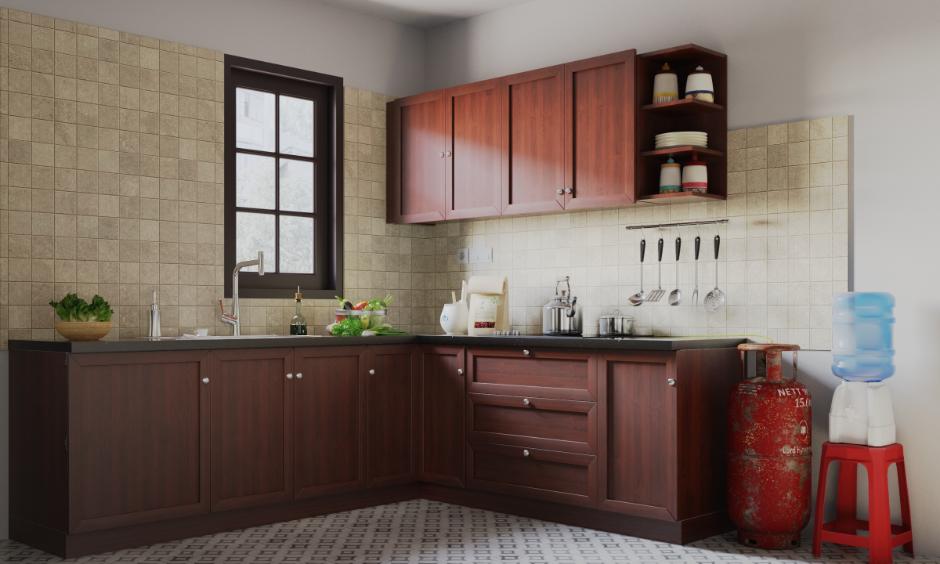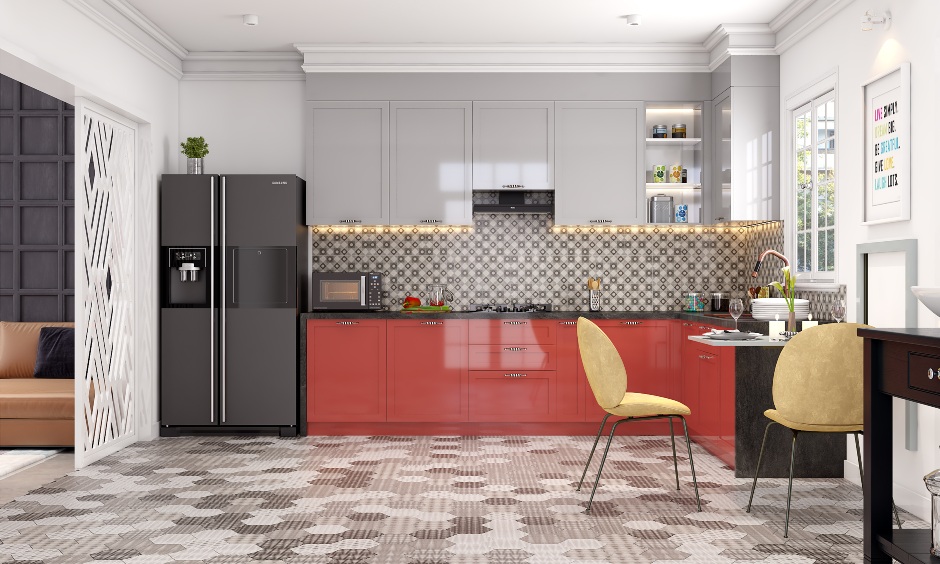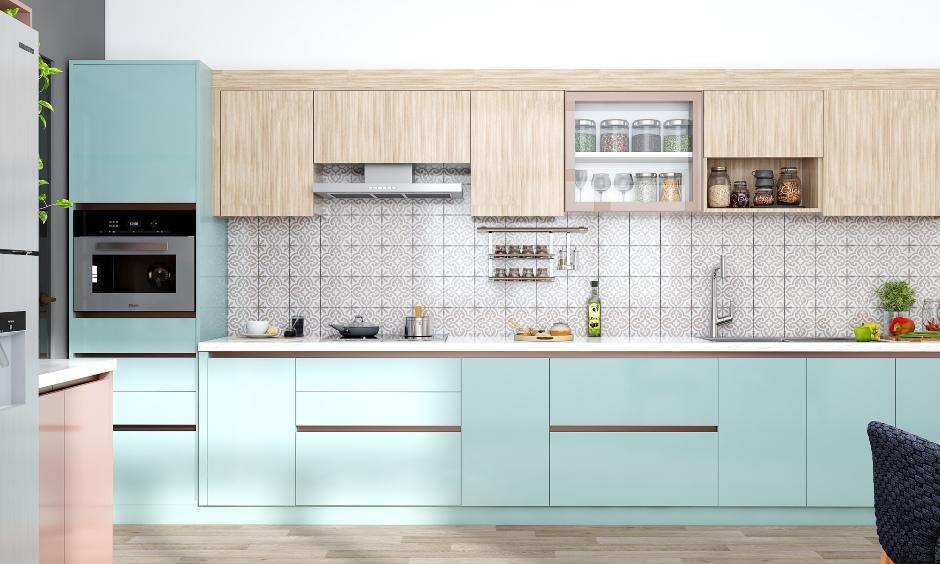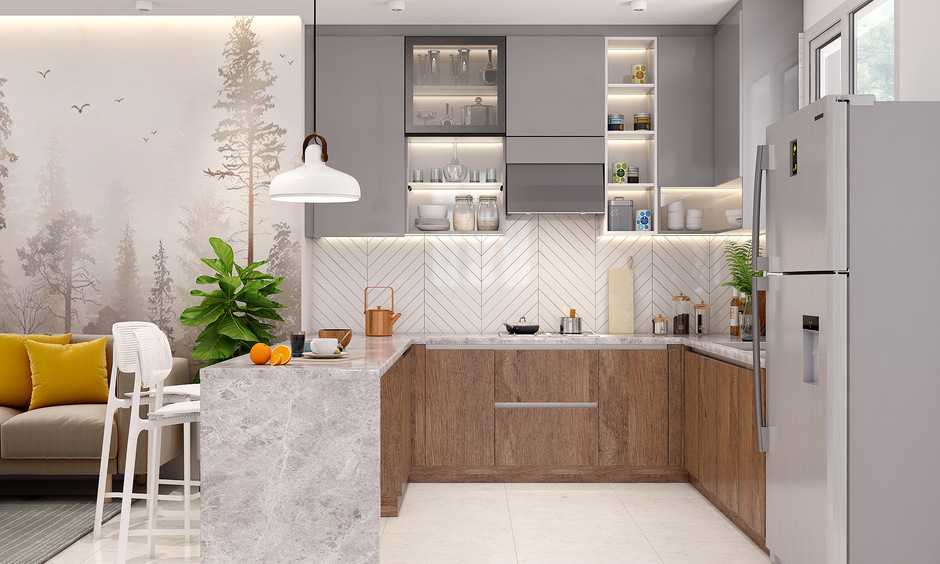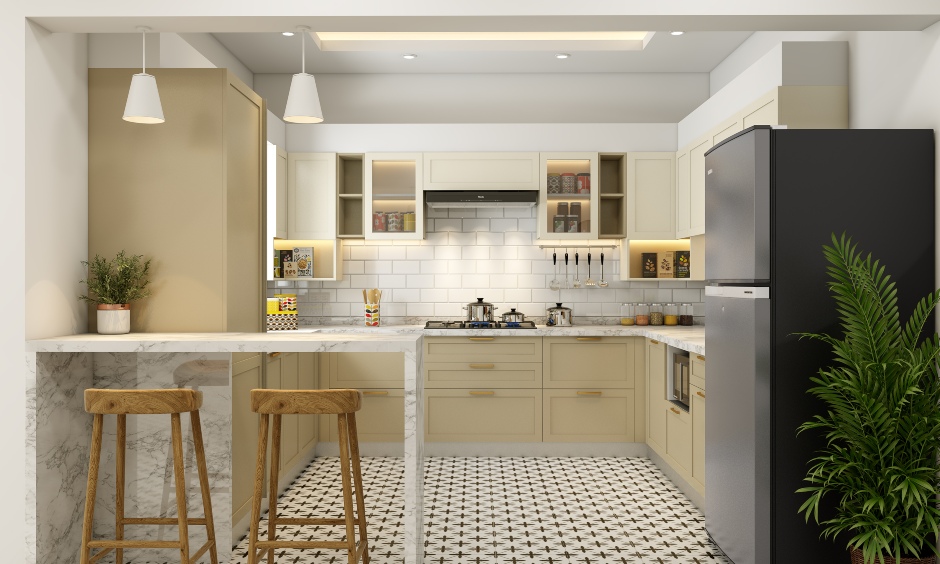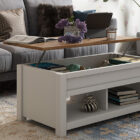Let your kitchen stay rooted in tradition while making room for everyday ease. Read more here.
Kitchen designs have evolved, but there’s something timeless about traditional Indian kitchens. The smell of wood, open shelves lined with jars, and sturdy wooden cabinets bring back warm memories from the past. These are the little details that define the charm of traditional non-modular kitchen designs. In this blog, we’ll examine the key features of non-modular kitchens and their relevance in today’s fast-paced lifestyle, which demands smart design and everyday efficiency. With a few thoughtful upgrades, it’s possible to retain the old-world warmth while incorporating modern-day functionality.
Modular vs. Non-Modular Kitchen: A Clear Comparison
Here’s a quick look at how modular kitchens compare with non-modular ones:
| Feature | Modular Kitchen | Non-Modular Kitchen |
| Installation | Quick and factory-finished | Built on-site, takes more time |
| Storage | Smart storage with drawers and pull-outs | Basic shelves and cabinets |
| Look & Feel | Sleek and modern | Traditional and handcrafted |
| Maintenance | Easy to clean and upgrade | Can be harder to maintain |
| Flexibility | Easy to reassemble or shift | Fixed and difficult to modify |
Each type of kitchen has its own strengths. Consult with the experts at DesignCafe to discover which one truly works for your space and lifestyle.
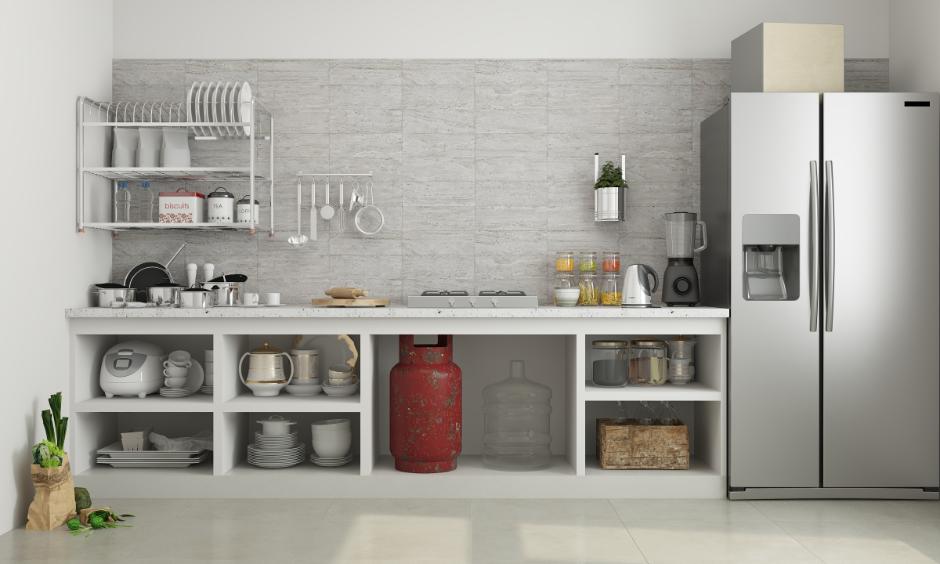
Key Elements & Components of Non-Modular Indian Kitchen Design
A non-modular Indian kitchen focuses on functionality and comfort, often customised to suit traditional cooking styles. Here are a few key elements that define it:
- Non-Modular Kitchen Cabinets: Built on-site by skilled carpenters, these cabinets are tailored to fit the space perfectly. Though not standardised, they offer plenty of storage for utensils and groceries.
- Simple Shelf Layout: A simple, non-modular kitchen design typically features open shelves for everyday items, such as spice boxes, jars, and containers. Everything stays within reach and easy to organise.
- Traditional Countertops: Stone or granite countertops are common. They are durable, low-maintenance and ideal for heavy Indian cooking.
- Freestanding Furniture: Movable tables or trolleys are often used for extra workspace or storage. These support a flexible kitchen organisation.
- Basic Ventilation: Natural light, open windows and exhaust fans help keep the space airy. A chimney can be added without changing the core layout.
Even with simple elements, a non-modular kitchen can feel warm, practical and full of personality.
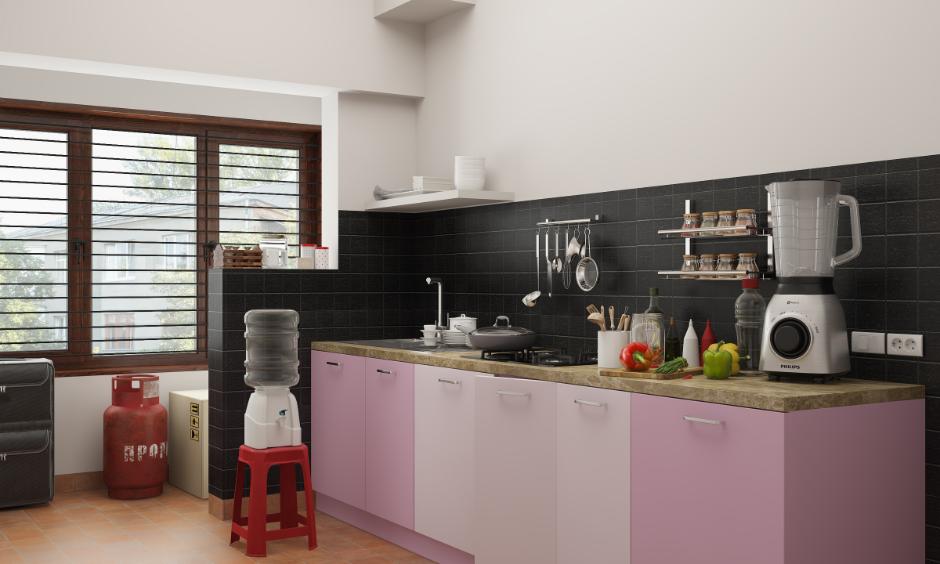
Popular Non-Modular Kitchen Design Styles
Here are a few ideas to help you create a space that feels both familiar and functional.
- Rustic Indian Style: Wooden cabinets, open shelves, and earthy tones create a warm, homely vibe.
- South Indian Traditional: Stone countertops, brass storage containers and low-height workstations are key features.
- North Indian Vintage: Bold wood finishes, patterned tiles and freestanding units bring in old-world charm.
- Minimalist: Clean lines, fewer cabinets and functional open layouts define this simple look.
- Colonial Influence: Tall glass-front cabinets and dark wood elements give a timeless, heritage touch.
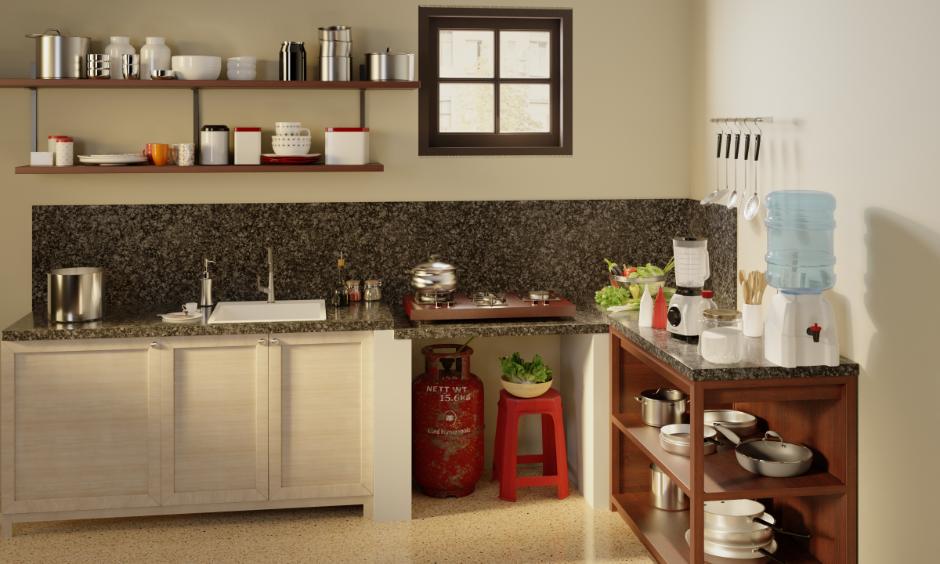
Your Step-by-Step Guide to Planning a Simple Non-Modular Kitchen Design
Planning a simple, non-modular kitchen design requires some thought, but with the right steps, you can create a space that’s both functional and charming.
- Measure and Map the Layout: Know your available space for a practical kitchen design setup.
- Fix Cabinet Zones: Determine where your non-modular kitchen cabinets and shelves will be placed.
- Add Smart Storage: Mix open racks and trolleys for better kitchen organisation.
- Choose Materials Wisely: Opt for solid wood, granite or stone in your simple kitchen design.
- Plan Lighting and Airflow: Utilise natural light, exhaust fans, and place appliances strategically.
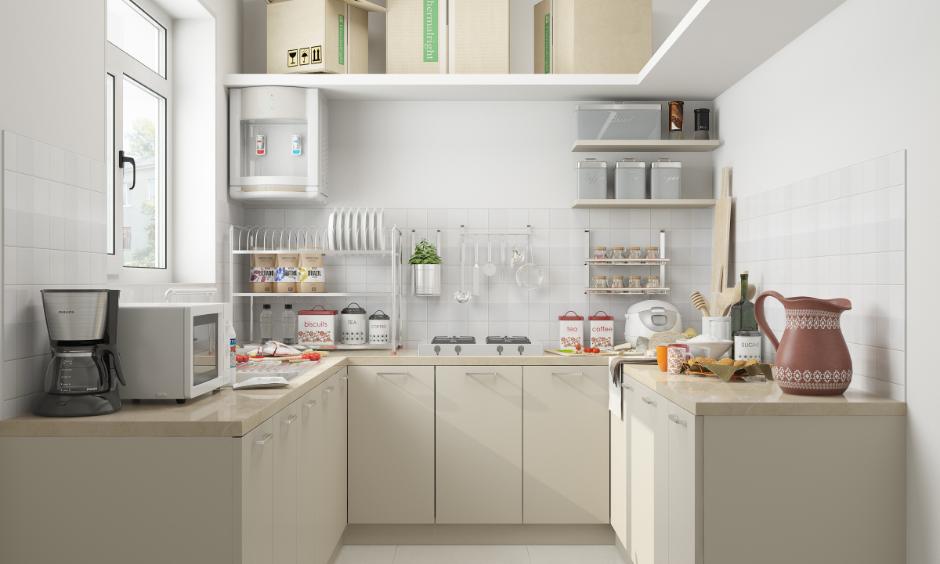
Advantages of a Well-Designed Non-Modular Kitchen
A thoughtfully planned, traditional kitchen can offer more than just nostalgia. Here are some key benefits:
- Customised to Your Needs: Everything is built on-site, so you can design it exactly the way you want.
- Budget-friendly Options: Local materials and carpentry can make it more affordable than modular setups.
- Traditional Charm: The look and feel reflect the warmth of traditional non-modular kitchen designs.
- Strong and Long-lasting: Solid wood and stone elements offer good durability with proper care.
- Spacious Feel: Open shelving and freestanding units create a more spacious layout, particularly in small, non-modular kitchens.
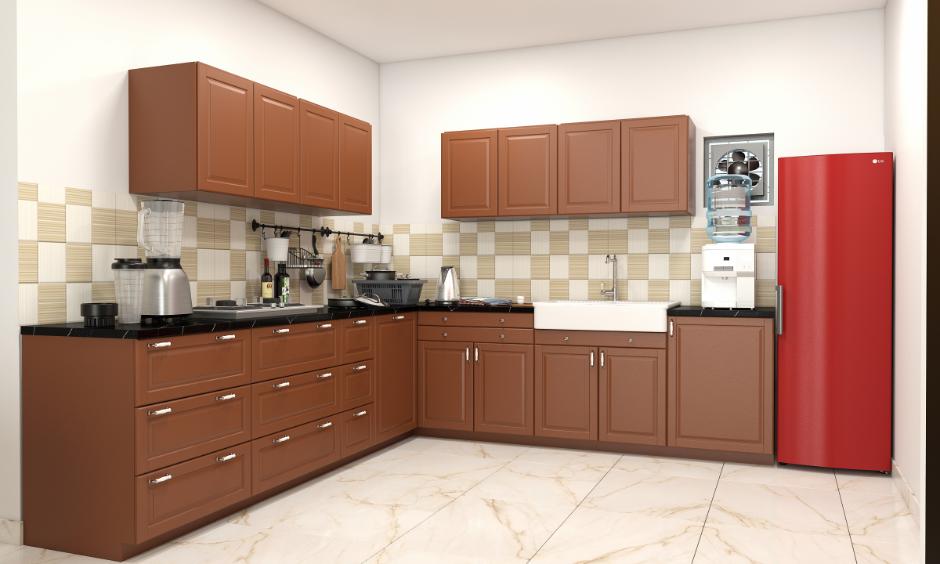
Maintenance & Care for Non-Modular Kitchen Designs
If you have chosen a non-modular kitchen, a little extra care goes a long way in keeping it looking good and working well.
- Wipe Open Shelves Regularly: Open racks and jars are easy to access, but they collect dust quickly. A weekly wipe-down helps keep things clean and fresh.
- Polish Wooden Cabinets: Most non-modular kitchen cabinets are made of wood or plywood. Use polish or a wood cleaner occasionally to prevent wear and tear.
- Keep an Eye on Hinges & Handles: Since these kitchens are built on-site, fittings may loosen over time. Tighten screws and fix any wobbly handles when needed.
- Avoid Water Seepage: Make sure there’s no waterlogging near the sink or corners, especially in older setups.
- Organise Often: A quick recheck of your kitchen organisation every few months keeps the space clutter-free and functional.
With these small steps, your kitchen can stay just as warm, reliable and beautiful for years to come.

Modern Kitchen Designs
Here’s Why Non-Modular Kitchen Designs Can Be Tricky
As much as we love the warmth of traditional kitchen designs, they do come with a few practical challenges.
Open shelves are great for access, but they collect dust quickly. Storage may not always be sufficient, and over time, it can become challenging to maintain a neat environment. Since there are no standard sizes, you might end up with cabinets that don’t fully use your space.
- It’s harder to shift things around or make changes later
- Custom carpentry takes time and needs regular upkeep
- In smaller homes, storage planning can be a bit limited
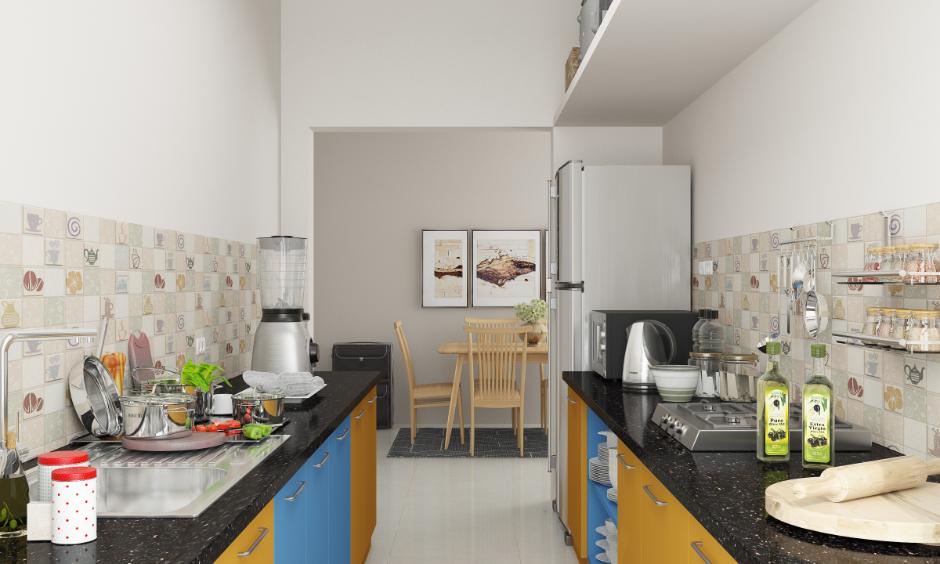
There’s no denying the charm of non-modular kitchens. They bring a familiar, homely feel that many of us have grown up with. But when it comes to everyday use, especially in smaller homes, they can fall short. A small non-modular kitchen design often ends up feeling cramped, hard to organise and not very efficient. That’s why more homeowners today are choosing to invest in modular kitchens. They save space, add smart storage, and are much easier to maintain in the long run.
If you’re thinking of giving your kitchen a thoughtful upgrade, book a free consultation with Design Cafe. Let’s build a kitchen that blends beauty with everyday ease.
FAQs
How to arrange a non-modular kitchen?
Use base non-modular kitchen cabinets for heavy items, open shelves for daily use, and wall hooks to maximise space.
How to decorate a non-modular kitchen?
Add vintage jars, indoor plants and colourful tiles. A styled kitchen shelf can double up as decor in a traditional kitchen design.
How do I ensure good quality in a non-modular kitchen?
Select strong materials, such as marine plywood or hardwood, for non-modular kitchen cabinets, and opt for trusted local carpenters.
Is a non-modular kitchen cheaper than a modular one?
Yes, but only at the start. In the debate between modular and non-modular kitchens, modular kitchens win for long-term convenience and better space utilisation.
What are the best materials for non-modular kitchen cabinets in India?
Plywood, marine ply and solid wood work best for non-modular kitchen cabinets, especially in non-modular Indian kitchen setups.
 Select Category
Select Category

